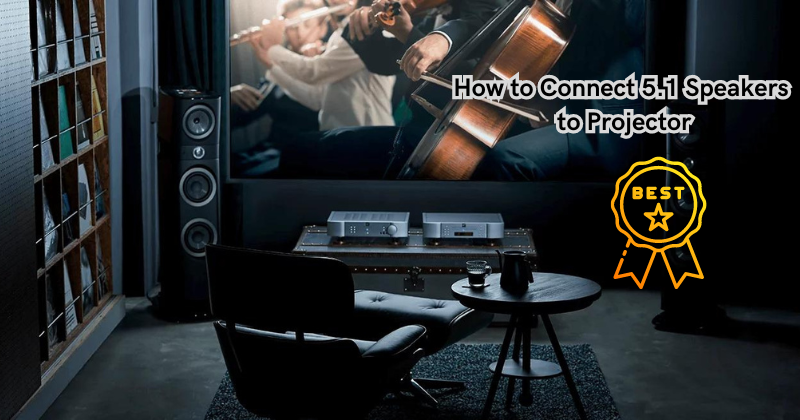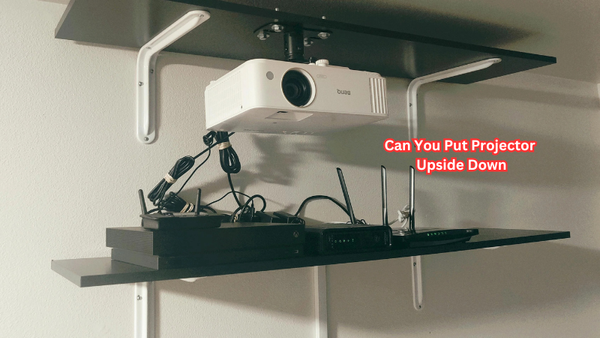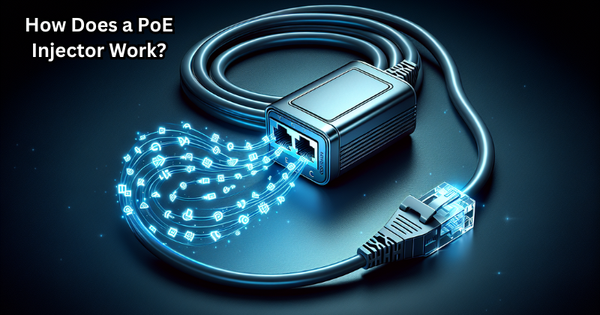Connecting a 5.1 speaker system to a projector opens up a world of immersive audiovisual experiences, enhancing home entertainment and presentations with rich, multi-channel sound.
However, navigating the technical aspects of this setup can be daunting for many users. From understanding audio input options to configuring the speaker placement, achieving seamless integration between the projector and the 5.1 speakers requires careful consideration and knowledge of audio connectivity.
By delving into the intricacies of this setup, users can unlock the full potential of their home theater or presentation environment, elevating the auditory and visual impact of their content for an unparalleled viewing and listening experience.
Understanding Audio Input Options
Before connecting the 5.1 speakers to a projector, it is important to understand the various audio input options available. Different projectors have different audio input ports, such as HDMI, RCA, AUX or Bluetooth. Users should consult their projector's manual to determine which audio input option works best for their setup.
- HDMI: This is the most common audio input option for projectors, capable of transmitting high-quality audio and video signals through a single cable. Audio signals are transmitted digitally, resulting in clear and distortion-free sound. HDMI cable also supports surround sound formats, making it an ideal choice for connecting 5.1 speakers.
- RCA: This is a standard analog audio input option found on most projectors and speakers. Users will need to connect multiple RCA cables to transmit all six channels of the 5.1 audio. Stereo audio output can also be achieved by using only two of the six RCA cables. RCA video inputs are also available on some projectors, but they cannot transmit audio signals.
- AUX: Some projectors have an auxiliary audio input that allows users to connect their smartphones or tablets directly to the projector for streaming content with sound.
- Bluetooth: This option is typically only available on higher-end projectors and speakers, allowing for wireless audio transmission between devices.
Connect surround sound speakers to a projector with these different audio input options by using the appropriate cables or wireless connections.
What is 5.1 Speakers?
5.1 speakers refer to a surround sound system that consists of six audio channels - five main speakers and one subwoofer. The "5" stands for the five main speakers, while the "1" represents the low-frequency effects channel (LFE) produced by the subwoofer.
This configuration creates a dynamic, multi-dimensional soundstage that immerses users in a 360-degree audio experience. The five main speakers include a center channel, left and right front channels, and left and right rear/surround channels.
Placing the Speakers
Proper speaker placement is crucial for achieving optimal sound quality in a 5.1 setup. The following tips can help users determine the best placement for their speakers:
- Center channel: Place the center channel speaker directly in front of the projector, either above or below the screen.
- Front left and right channels: These speakers should be placed at equal distances from the center speaker and angled towards the viewing area.
- Surround/rear left and right channels: Ideally, these speakers should be positioned slightly behind and to the sides of the viewing area, creating a sense of envelopment in the sound.
- Subwoofer: The subwoofer can be placed anywhere in the room but should be relatively close to one of the front speakers for optimal bass dispersion.
The stereo audio jack is that it transmits both the right and left channels of the audio signal through a single cable, making it ideal for connecting to external speakers.
How to Connect 5.1 Speakers to Projector
For audio connection of speakers with a projector, there are several methods that can be used, depending on the available audio input options and preferences of each user.
Stereo speakers can be connected to projectors through an audio cable, while surround sound speakers require more complex setups.
The 5.1 speaker system boasts ample power to effectively saturate a standard living room with immersive sound when paired with projectors.
Typically, projectors offer either a 3.5mm audio output or an additional HDMI cable for connectivity. The audio output port of the projector to the audio input port on the speakers using the appropriate cable.
For HDMI, users will need an HDMI splitter that separates the audio and video signals before connecting them to their respective devices.
Now, we will tell you different ways to connect projectors with speakers:
Connecting Through Stereo Speakers:
This method is quite easy and involves connecting two stereo speakers, one to the left and another to the right audio channel of the projector. This can be achieved by using either an AUX cable or RCA cable. Here is how to do it:
- Turn off all devices before connecting any cables.
- Connect the 3.5mm end of the AUX cable to the audio output port of the projector and the other end to one of the stereo speakers.
- Repeat step 2 for connecting another stereo speaker to the remaining audio channel.
- Turn on all devices and test the audio output.
Connecting 5.1 Speakers Through AV Receiver:
An AV (audio/video) receiver acts as the central hub for all audio and video signals, making it an ideal device for connecting multiple speakers to a projector. This method requires an additional AV receiver with enough channels to support 5.1 surround sound.
- Turn off all devices before connecting any cables.
- Connect the HDMI output of the projector to the HDMI input of the AV receiver using an HDMI cable.
- Connect the audio output port of the projector to the audio input ports on the AV receiver using either an AUX or RCA cable.
- Connect each speaker to its respective channel on the AV receiver, ensuring that they are correctly placed according to their designated positions (center, front left/right, rear/surround left/right, and subwoofer).
- Turn on all devices and test the audio output.
Bluetooth Connectivity:
Some projectors and speakers offer Bluetooth connectivity for wireless audio transmission. The projector supports Bluetooth wireless audio transmission and can be easily paired with Bluetooth-enabled speakers for a clutter-free setup.
- Enable Bluetooth on both the projector and speaker.
- Pair/connect the two devices.
- Test the audio output.
HDMI ARC Connection:
HDMI ARC (Audio Return Channel) is a feature that allows for two-way communication between the projector and speakers, making it an ideal option for audio connection.
- Turn off all devices before connecting any cables.
- Connect one end of the HDMI cable to the HDMI output port of the projector and the other end to the HDMI input port labeled "ARC" on the speaker.
- Turn on all devices and test the audio output.
These are just a few ways to connect surround sound speakers to a projector. With audio settings for every method, you can get superior sound quality in no time. If you play content from a streaming device, for an immersive audio experience, make sure that the streaming service supports surround sound.
Extra Tips and Tricks for Optimal Sound Quality
- Always make sure that all devices are turned off before connecting any cables to avoid potential damage.
- Check the compatibility of audio output ports on both the projector and speakers before purchasing any cables or adapters.
- Experiment with speaker placement to find the best sound quality for your specific room layout. Some trial and error may be necessary, but it will ultimately result in a better audio experience.
- Consider investing in a high-quality sound system for an even more immersive movie-watching experience. 5.1 speakers are a great starting point, but there are also options for 7.1 and above for those seeking the ultimate surround sound setup.
Does Netflix Support 5.1 Sound?
Yes, Netflix does support 5.1 surround sound for compatible devices and content. This means that if you have a surround sound system connected to your projector and are watching a show or movie on Netflix that has been mixed in 5.1 audio, you can experience the full immersive audio experience.
Not all content on Netflix is available in 5.1 surround sound, but the majority of original content and some licensed content do offer this feature. You can easily check if a title has 5.1 audio by looking at the audio options listed under the title's description.
Additionally, your device must also support 5.1 surround sound for you to be able to experience it on Netflix. This includes having an AV receiver or soundbar with at least 5.1 channels and having your device's audio settings configured to output in 5.1 surround sound.
FAQs
Can HDMI output 5.1 surround sound?
Yes, HDMI is capable of outputting 5.1 surround sound as long as the device connected to it has a compatible audio format and both the source (projector) and receiver (speakers) are set up correctly.
Does connecting through an AV receiver improve sound quality?
Connecting through an AV receiver can improve sound quality as it allows for central control and distribution of audio signals to multiple speakers, resulting in a more balanced and immersive sound experience.
Do 5.1 speakers need a receiver?
Yes, 5.1 speakers require a receiver to distribute audio signals to each speaker properly and achieve surround sound. However, some modern 5.1 speakers have built-in amplifiers and receivers, eliminating the need for an external one. It is important to check the specifications of your specific speaker system before purchasing any additional equipment.
Can I connect wireless surround speakers to a projector?
Yes, you can connect wireless surround speakers to a projector through Bluetooth connectivity or by using an HDMI ARC connection. However, it's important to check the compatibility of your specific devices before attempting this setup.
Conclusion
In conclusion, connecting 5.1 speakers to a projector can significantly enhance the audiovisual experience of home entertainment systems.
By following the appropriate steps, users can seamlessly integrate the surround sound capabilities of 5.1 speakers with their projector setup, creating an immersive cinematic environment.
Understanding the input and output options of both the projector and the speakers is crucial, as it allows for the selection of the most suitable connectivity method, whether through HDMI, optical, or other interfaces.
Additionally, configuring the audio settings on the projector to accommodate the multi-channel output of the 5.1 speakers is essential for optimal performance.
Ultimately, by establishing a seamless connection between the 5.1 speakers and the projector, users can enjoy a truly captivating audiovisual experience that elevates their movie nights, gaming sessions, and multimedia presentations.





